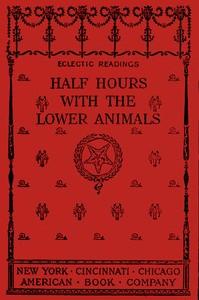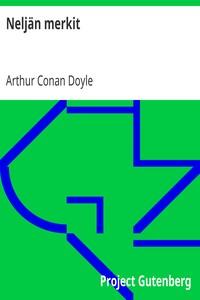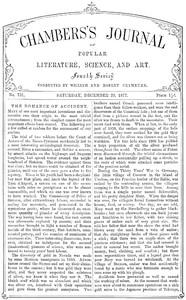Read this ebook for free! No credit card needed, absolutely nothing to pay.
Words: 47827 in 21 pages
This is an ebook sharing website. You can read the uploaded ebooks for free here. No credit cards needed, nothing to pay. If you want to own a digital copy of the ebook, or want to read offline with your favorite ebook-reader, then you can choose to buy and download the ebook.


: Half Hours with the Lower Animals Protozoans Sponges Corals Shells Insects and Crustaceans by Holder Charles Frederick - Animals; Invertebrates
INDEX 233
HALF HOURS WITH
THE LOWER ANIMALS
PROTOZOANS, SPONGES, CORALS, SHELLS, INSECTS, AND CRUSTACEANS
The most unobserving stroller through the forest or by the seashore can not fail to be impressed by the abundance and variety of animal life; yet the forms visible to the naked eye really constitute but a fraction of the vast horde which makes up what we call life.
In the year 1901 a strange phenomenon appeared off the coast of southern California. The ocean assumed a reddish muddy hue which was traced for four hundred miles up the coast and from one to twenty miles offshore; hence, at a conservative estimate, the reddish color occupied a space of ten thousand square miles. At night it assumed a greenish light, and when the wind rose and formed whitecaps, each became a blaze of light, and the ocean as far as the eye could reach was converted into a mass of seeming flame. The sands of the beach gave out flashes of light when touched; the footsteps of dog or man on the sands left an imprint of vivid light, and figures made on the sands with a finger or stick stood out in lines of light. Ten thousand square miles of phosphorescent light; ten thousand square miles of living beings, each so minute that it was almost if not quite invisible to the human eye. Who could estimate the individuals in one square mile, one square foot, or even a drop of this reddish water? This illustrates the fact that the greater number of the earth's population are unseen, even though not invisible to the unaided eye.
These minute animals are as interesting as the larger forms. Equipped with a microscope, we are prepared to explore the regions in which they live and observe their habits. A favorite hunting ground for this small game is some long-standing water in which plants have been growing. Placing some of this, with the green scraping of the glass, on the slide, we shall soon make out, moving mysteriously along, something which resembles the white of an egg, an atom of slime or jelly. Now it stops and throws out parts of itself which seem to fuse together again; now it is long, now short and compact, again circular. You almost believe it is a mere atom of slime, yet it is an animal which eats and lives its life cycle in a drop of water, one of the lowest of all animals.
It is called Amoeba , and although it is hardly a hundredth of an inch in diameter, yet if we devote some time to it we shall find that it is a very remarkable animal. Thus if it wishes to move in any given direction, a portion of the body becomes a seeming leg and protrudes in that direction, the rest of the body following, drawn along in some mysterious manner. If it wishes to eat, it is not obliged to twist around to bring the food or victims opposite the mouth, as a mouth forms there and then; the Amoeba merely glides around it and covers it up.
We may even notice a difference in the parts. Thus the center calls to mind ground glass; it is blurred or granular, while around the edges is a little border which is transparent, like ordinary window glass. So the Amoeba is a minute mass of jelly inclosed in a layer a little clearer.
Floating in the granular portion is seen a minute round body called the nucleus, clearer than the fluid in which it rests, and not far away another clear, circular body, which from time to time contracts or sometimes disappears in a marvelous fashion, but always returns. This is called the contracting vesicle, and here our discoveries end, so far as organs and structure are concerned, as these are nearly all that have been found; yet the Amoeba eats, doubtless sleeps, and grows.
We may watch it at its dinner. When a victim is found, an animal smaller than itself, out shoots a little cape or extension from the clear rim, creeping slowly up the side of the animal; and if we watch very closely, we shall see the thicker portion of the Amoeba, that which calls to mind ground glass, running or flowing into it. Then another false foot, as it is called, slowly creeps out on the opposite side and joins its companion, more of the ground-glass matter slides or pours into this, filling it out, and, presto! the two arms merge one into the other. The victim has been swallowed and is now being digested .
That this minute atom has its likes and dislikes is evident, for if the food is too large, or not to its taste, it retracts, or even draws away from it after it has swallowed it. The shells of its victim, if it has them, are rejected in a manner equally simple; the Amoeba flows away from them. Jar it with a needle point and it contracts, showing that it can be irritated. At times the body is seen to divide and two Amoebae are formed , each of which has a separate existence from then on. Such is one of the lowest of all animals. It is made up of but a single cell. All the members of the other great branches of the animal kingdom and the higher plants are made up of many cells; hence we see that the Amoeba is the simplest and lowest of all animals.
Free books android app tbrJar TBR JAR Read Free books online gutenberg
More posts by @FreeBooks

: Gesammelte Schulhumoresken by Eckstein Ernst - German wit and humor; Short stories German; German fiction


: German Atrocities: A Record of Shameless Deeds by Le Queux William - World War 1914-1918 Atrocities






